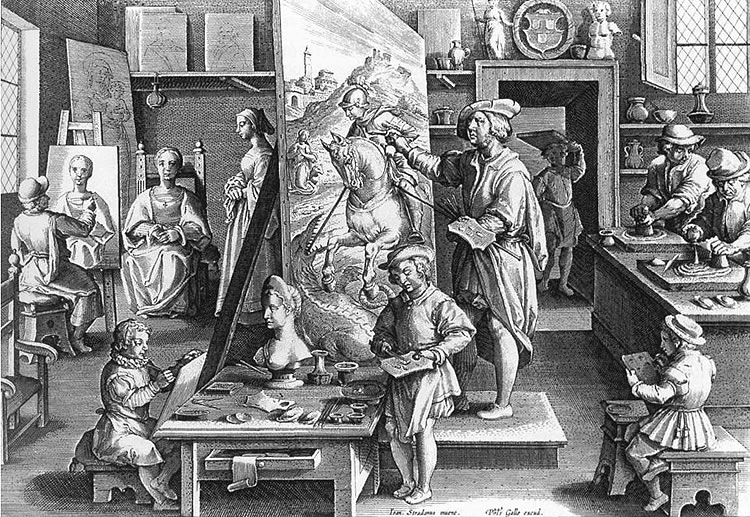I was born in the middle of art. Ever since I was a child, I had seen the paintings of my grandfather, Manabu Mabe, he stayed in his studio all day, and later on, he never left my uncle, who also paints. My father has always had a gallery, and I not only attended many exhibitions, but also went to the Bienal, which was a super event, and took painting classes with my grandmother, my sister and my cousins. My grandfather had many painters friends and even some apprentices. That was my view on art, and everything was very grand.
Over time, I learned that this is the most traditional and romantic view of art. The one we see in films and on television, of the artist painting alone in his studio and often struggling to live off his art. But it is not the only one. It is with great disdain that I hear about artists who do not produce their works themselves, who have teams and people hired to do their projects. So much so that I decided to learn about the subject.

Not surprisingly, I discovered that the origin of art studios occurred in the Renaissance. The most famous painters had bottegas, which were ateliers that they played and had a team of apprentices to assist them with the works, often commissioned by patrons, or patrons. At bottegas (not to be confused with bodegas, Spanish word for groceries or convenience stores) had a maximum of 16 painters, who went up as they demonstrated their talent to the master.
The degree of involvement of the chief painter varied according to the amount he received from the patron for the work, and, as the paintings were, in most cases, oil-based, they worked in parallel on several works while the canvases dried. Ordering a canvas from a famous painter in the Renaissance did not mean that the painter would paint the entire canvas on his own, but that the work would come from his studio, or bottega.

Further on, in the 19th century, the École nationale supérieure des beuax-arts appeared in 1816, in France, which challenged the Renaissance model by promoting its own exhibitions, called salons, which have become the biggest art events of the century by supporting, promoting and criticizing artistic developments.
In the 1960s, Andy Warhol emerged with the The Factorythat was yours art studio and party room. He became known for the series production of works of art, through silk screen, and the parties he promoted, attended by celebrities.

Today the best known is perhaps Jeff Koons, who literally has 100 employees who receive a very low salary, and produce the works he idealizes. His role is more like that of an architect, who designs the work. Curious about Koons, I found a description about his process. He makes collages in Photoshop and his team reproduces the collage, thoroughly, using small-tip brushes on larger-scale screens. You have certainly seen collages of other artists on Instagram, and the precursor is undoubtedly Koons.
Koons has the job of idealizing the work, making the composition, with balance and color balance and arranging the images. With his team, the results are impressive, some screens actually look like photos. Let the first stone be thrown by anyone who has never been impressed by a collage, now imagine that Koons collages are not simple collages, they are oil painted canvases.

But, they are not painted, nor sculpted by him. In the Renaissance, the painters, in addition to finishing the works, were responsible for the most difficult parts, the faces and hands. And this is exactly the question of that text. If art moves in the direction of advertising; in the past, agencies had some geniuses, who created catch phrases, slogans and idealized the campaigns, whereas today they are mega corporations that work in tune, but no longer supported by an advertiser.
For most, it is as if a footballer does not play himself, or puts another to play, or assembles a team. Or our reaction to discovering that James Bond, The Three Musketeers and the Count of Monte Cristo, were written by ghost writers. In the case of these, the author of the book has the idea and the ghost writer translates this idea into a complete work, usually with a confidentiality clause. In music it is also common to ghost writing.
The idea of art and artist that prevailed, originated from the book 'A Vida dos Artistas', by Giorgio Vasari, written in 1550, which proposed that the work of art is the complete expression of a single mind and hand. Despite not taking the merits and recognizing that the finished works of artists like Jeff Koons are impressive, I, who paint in my free time, chain smoking and everything else, I am a fan of the romantic view of art. For the tendency of things to take on too large dimensions, and to distort, is very high. Let’s keep artists, artists, and advertisers, advertisers…

Responses